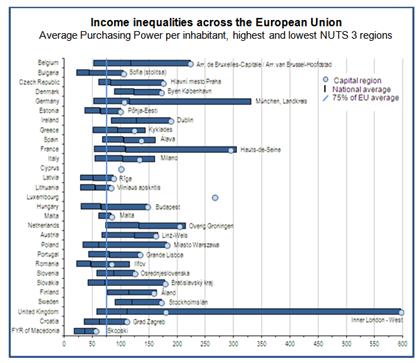Timea Nochta
It seemed that last year the NFCCC Paris Agreement finally reached a breakthrough after a long period of continuous failure of climate change negotiations between nation states. However, the Trump presidency is already threatening to withdraw from the commitment made only a few months ago. In this context, climate action and emissions mitigation on the sub-national level is more important than ever, even if managing low-carbon transitions in cities and regions is far from a straightforward process. In addition to issues related to knowledge deficit (i.e. uncertainty about locally relevant climate change effects, lack of reliable statistical data on emissions and consumption), municipalities also have to deal with constant cuts to their authority and financial and human resources due to the recent proliferation of austerity policies, further decreasing their capacity to facilitate low-carbon development.
As a consequence, more and more local authorities in Europe are beginning to engage in collaboration with higher levels of government, civil society and market actors to build commitment and to create a joint agenda for local transitions. Initiatives based on stakeholder integration, collaborative management, partnerships and networks are expected to provide opportunities to tackle the emerging problem of low-carbon transitions by creating space for interaction and multi-sectoral co-operation between various organisations; by facilitating informed decision-making based on knowledge exchange and deliberation between stakeholders; and by building engagement for achieving the negotiated goals.
However, governance processes (and their transformations) do not take place in a vacuum. Cross-national differences in terms of governing structures, techniques and belief systems (i.e. logics of appropriateness) have an impact on to what extent and in what ways new ideas and governing mechanisms get employed in certain realities on various scales. Evidence for geographical variation with regards to public sector reforms has been found both in relation to the adoption of new public management-inspired tools and techniques and more recently to the emergence of new public governance.
Despite such evidence, the academic research on managing sustainability transitions (as well as international agreements and European recommendations) largely neglects the potential consequences of spatial variation of institutional legacies in Europe in which transition networks must function. Consequently, we know very little about the real-world potential for governing low-carbon transitions via networks in different places.
Analysis of governance networks relevant to sustainable energy transitions in three European cities from three different countries, including Birmingham (UK), Budapest (HU) and Frankfurt-am-Main (DE) has confirmed that indeed networks are being instrumentalised in diverse ways in different places. Governance networks in the three cities were analysed and evaluated according to three characteristics: network formulation, embeddedness and structure & coordination. In terms of network formulation, networks exist as formal organisations in two out of the three cases, namely Birmingham and Frankfurt. In Budapest, plans are currently being drawn up for an advisory group to be set up as part of a collaborative initiative between municipal utility companies and council departments. Network formulation was influenced by the existence or absence of ambitious CO2 reduction targets relative to the national commitments. Setting such targets inferred not only the inevitability to taking action locally, but also the necessity to build new energy infrastructure as well as change the architecture of that which already exists.
In terms of embeddedness, it was found that the networks’ ability to engage stakeholders from the local energy regime correlated with the municipalities’ level of authority over energy systems. In the United Kingdom, local governments are excluded from the socio-technical regime of energy supply. This led to difficulties in coordinating the development and delivery of local low carbon energy agendas in Birmingham, due to little local level leverage over the available partners (national and multinational corporations) who possess the required technical and economic capabilities to assist in implementation. In contrast, the municipal energy company owns and operates energy infrastructures in Frankfurt; whereas in Budapest only the heat networks are organised on the local level. Differences in terms of embeddedness of the network in the energy regime impacts both network structure and the energy transition. Diverse networks driven by horizontal relationships and overlapping responsibilities were found in Birmingham, which translated into a transition process characterised by innovative, but small-scale pilot projects. In Frankfurt, the transition process appeared rather smooth and advanced compared to the other two cities due to a hierarchical relationship between the Energy Agency and the rest of the network. A traditional hierarchical relationship based on authority continues to exist in Budapest, where energy transition is confined to retrofitting existing but inefficient infrastructure.
In conclusion, the analysis demonstrated that governance via networks was increasingly seen by local authorities as an appropriate mechanism to manage sustainability transitions. However, different institutional legacies had an impact on the characteristics of network formulation, embeddedness and structure and coordination. The role of network management has been highlighted in facilitating low carbon transitions via networks: strong co-ordination has been linked with higher potential for upscaling pilot projects into city-wide change.

Timea Nochta is a Ph.D. researcher based at INLOGOV who is investigating the potential for managing urban energy transitions via network governance in European cities. Her research is funded by Climate KIC, Europe’s largest public-private innovation partnership aimed at addressing the challenge of climate change, and is supported by one of the KIC’s flagship projects, ‘Transition Cities’.


